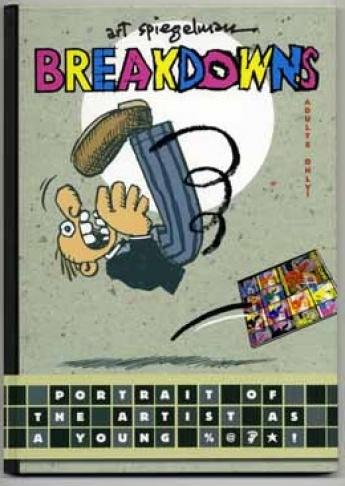Antiquarian Booksellers' Association of America Books Tell You Why, Inc.
Collecting Graphic Novels

By Audrey Golden
Graphic novels haven’t always held an esteemed spot on collectors’ shelves. While earlier incarnations of the graphic novel (i.e., comic books) have indeed been objects heavily and preciously collected, the rise of the graphic novel is assumed to be, for many readers, a relatively new phenomenon. Yet many graphic novels (and other works by their authors) are quite collectible. If you’re thinking about starting a new type of collection, delving into the history of this genre might be for you.
The Collectible Work of Art Spiegelman
Art Spiegelman is perhaps one of the most well-known graphic novelists at work today. His notoriety grew after the publication of Maus (1991), which was actually serialized between the years 1980 to 1991. The narrative traces the experiences of Art’s father, Vladek, through his persecution and internment in Auschwitz as a Polish Jew during World War II. The story was published in book form, and it won the Pulitzer Prize in 1992. Spiegelman has written numerous other works, and his post-9/11 work In the Shadow of No Towers (2004) drew much critical acclaim.
As it turns out - and as you might now expect - signed editions and other ephemera related to Spiegelman’s works are highly collectible. Viewers of the PBS television show Antiques Roadshow might know that one of Spiegelman’s graphic novel proposals from 1974 was recently valued at $8,000 to $12,000.* Similarly, you might be able to locate a rare signed copy of Funny Animals (1972), the first printed material to include text from Maus. Other more recent pencil drawings connected to Spiegelman’s novels could also make fantastic additions to your collection. But keep in mind that you may need to spend well over $1,000 to acquire any of these objects.
Max Ernst’s Surrealist Graphic Novels
It may not look like the kind of graphic novel to which we’re becoming accustomed as readers, but the “collage” novels of Max Ernst might readily fall into the category of collectible graphic novels. What should you seek out in particular? We’d recommend Une Semaine de Bonté (translated as “A Week of Kindness”). Unlike Spiegelman’s texts, this artist’s book doesn’t have any words.
As the Musée d’Orsay** notes in its description of this work, this novel is made up of 182 collages created by Ernst while he was living in Northern Italy. Looking to a wide variety of source material - from already published illustrated books to science journals to Victorian sales catalogues - Ernst created what the Parisian museum describes as “a series of interlinked images” that ultimately “produce extraordinary creatures which evolve in fascinating scenarios and create visionary worlds defying comprehension and any sense of reality.” The books in the graphic novel series came out in 1934. If you’re looking to purchase a true first edition by Aux Editions Jeanne Bucher, you may be spending upwards of $10,000. But if you’re thinking of adding to your collection a bit more modestly, you might seek out a collectible reprint. For example, the publisher JJ Pauvert of Paris printed an edition of Une Semaine de Bonté in 1963, while an American edition from Dover appeared in 1976.
As you might have noticed from the two very different types of works we mentioned, the genre of the graphic novel is still somewhat fluid. Given that many different printed narratives might fall under the classification of graphic novel, it’s a particularly exciting area in which to begin a collection: you can shape it in many different ways, ultimately developing a collection that speaks to your specific interests in region, subject matter, and time period.
***
Published on Books Tell You Why, presented here by permission of the author. Pictures: Books Tell You Why.
Do you collect graphic novels?

